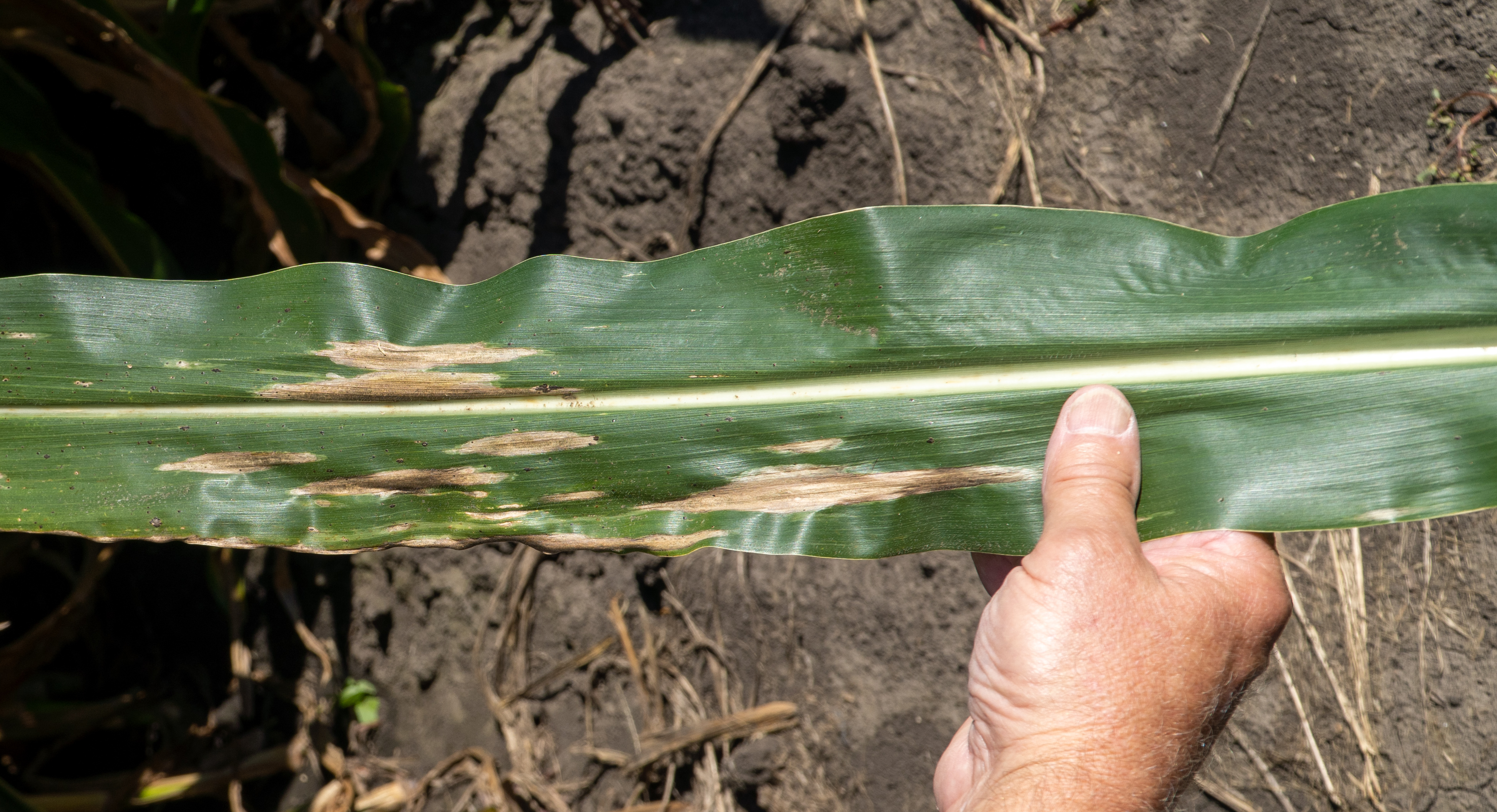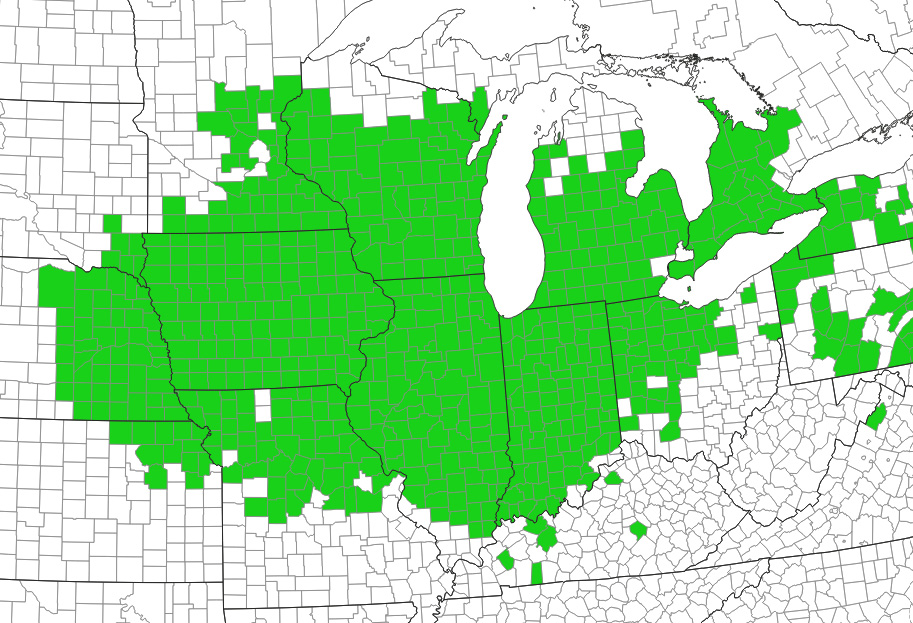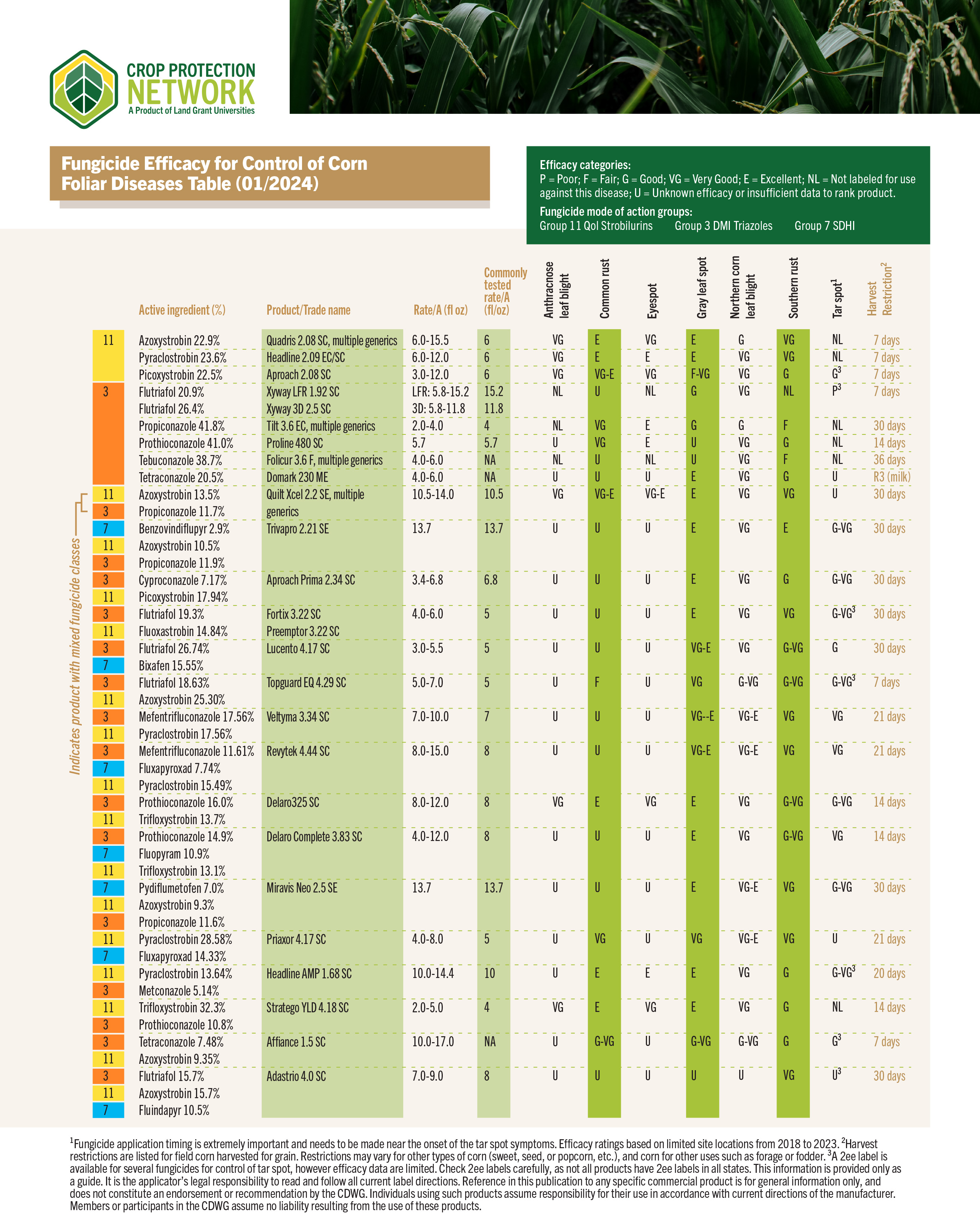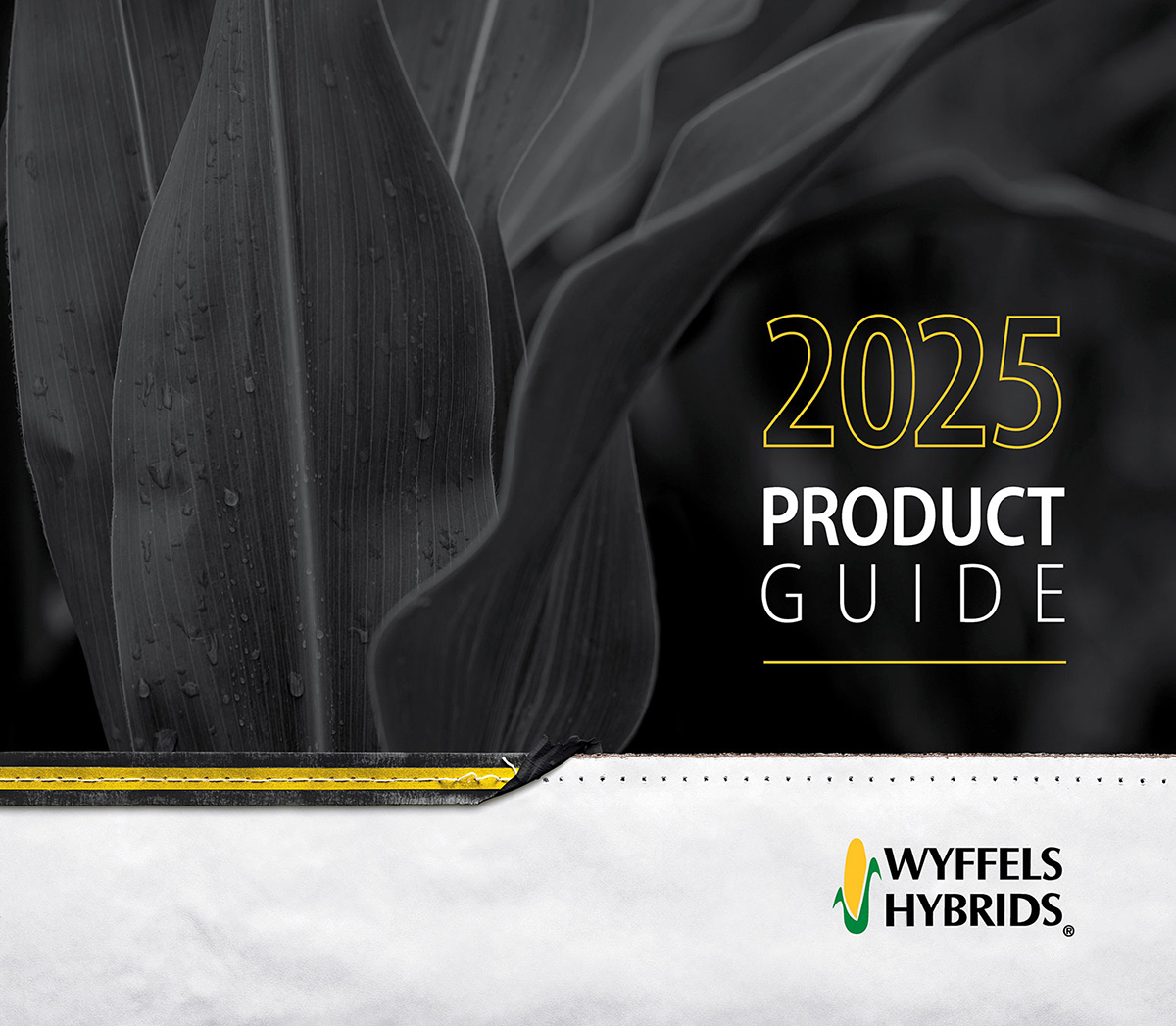
In the Central Corn Belt, tar spot in corn is caused by the fungus Phyllachora maydis. This pathogen is native to the cool, humid, mountainous regions of Latin America. Recently, this pathogen has invaded the Central Corn Belt and has left corn growers with many questions about the best management of this corn disease.
Identification
• Tar spot appears as black raised bumps resembling tar or black paint and can be present on both sides of leaves, as well as on husk and tassel tissues in severe cases.
• Tar spot cannot easily be scraped off of leaf surfaces using your finger or fingernail.
• Spots can appear as a raised black bump on otherwise green healthy plant tissue, or it can be surrounded by a brown to tan halo lesion resulting in a “fish-eye” appearance.
• Lesions can coalesce during later development and areas between spots will show a water-soaked appearance and subsequently dry out.
Disease Cycle
Tar spot must have a living host to grow and reproduce. It overwinters as spores in the Midwest. During the growing season, rain and high humidity promote spore germination which can be splashed from residue onto corn plants. The spores can also become air-borne and be blown into new fields.
Ideal conditions for disease development are 60-70°F with relative humidity 75% or greater and prolonged periods of leaf wetness (7+ hours per day). Infection and new spore development can occur within 14 days, and multiple spore release events can occur within a growing season. Corn is susceptible to infection at all growth stages. If conditions are ideal, susceptible plants can become covered in lesions in as little as 2-3 weeks.
Two weather variables have been helpful in predicting where tar spot will set in. Normal to above normal June rainfall is one of those variables favoring disease development. Moisture during June provides humid conditions in the canopy that allow the disease to get established. The second weather variable is July and August rainfall. Rainfall or humid conditions later in the season are needed to continue disease spread and intensity. More severe tar spot years have resulted when wet Junes have coupled with above normal July-August rainfall.
Yield Impact
Impacts on yield depend on severity and timing of infection. Infection can occur at any growth stage under favorable conditions for disease development, but research suggests infections most commonly start around V8 and become more visible as corn plants enter the reproductive stages.
Corn can be overtaken quickly if weather is conducive during the reproductive stages of corn (R1- R6) resulting in reduced photosynthetic leaf area. Yield loss is primarily a result of premature plant death, reduced kernel weight and poor kernel fill.
Management
If you saw significant tar spot levels in previous years, it doesn’t mean you’re going to see those levels every year. Like all diseases, we need a host (corn), inoculum, and conducive weather to get disease development. Once the disease has been found in an area, the primary variable influencing disease development and severity is the weather.
One thing we have learned is that when tar spot does show up it can cause significant yield loss if not properly managed, which is why we have consistent recommendations each year regardless of the weather and environment.
Wyffels Hybrids tar spot recommendations:
1. Start scouting for tar spot lesions at V8-V10. If you find lesions, apply a fungicide as soon as possible.
2. At minimum, we recommend a VT-R2 fungicide application regardless of lesion presence.
- Due to speed of development and risk of significant yield loss, a fungicide application is worth the investment.
3. After VT-R2 application, continue to scout. A second application may be necessary up to dent stage (R5) if disease continues to progress.
Hybrid Selection – There is no U.S. germplasm fully resistant to tar spot. Current hybrids can respond differently to tar spot, especially in the development of visible tar spot lesions, but our research has not found that these differences affect yield when tar spot is present. This means selecting hybrids based on tar spot tolerance has limited value at this time, and every hybrid you plant would have the same management recommendations regardless of how it visibly responds.
Crop Rotation and Residue Management – Crop rotation and residue management only play a minor role in influencing disease development. Tar spot spores can be spread by wind, meaning crop rotation is not a reliable management strategy. Practices to bury and degrade corn residue can help reduce inoculum load slightly, but research so far has shown it makes only a minimal difference.

Shaded areas show where tar spot has been confirmed in previous years.
Fungicide Applications – The most reliable management strategy for tar spot management is utilizing fungicides. Growers need to be prepared to spray a fungicide from V8 up to R5 (dent) if tar spot is present and progressing. Multiple applications may be necessary if environmental conditions warrant.
The Crop Protection Network has published ratings for tar spot efficacy on many common fungicide products, which can be found in the table on the following page.
This University research has shown very good yield response with dual and triple mode of action fungicides sprayed at VT-R1. Keep in mind, it’s also important to scout for and manage other leaf diseases, too, as we have observed a compounding effect when tar spot is present with other leaf diseases like Gray Leaf Spot (GLS) and Northern Corn Leaf Blight (NCLB).
Tarspotter app – The University of Wisconsin has also developed an app to help predict the upcoming risk for tar spot based on local information inputted by the user. This app along with scouting has shown to help make timely decisions on fungicide applications the last two growing seasons.
The Tarspotter app can be downloaded for free on most iOS and Android devices.
Learning to Live With Tar Spot
Tar spot is here to stay in the Central Corn Belt, but as with all diseases it takes the right set of environmental conditions for the disease to take off in any one growing season. Scouting and timely fungicide applications are the best in-season management tools, especially if you encounter consecutive days of rain and high humidity.

